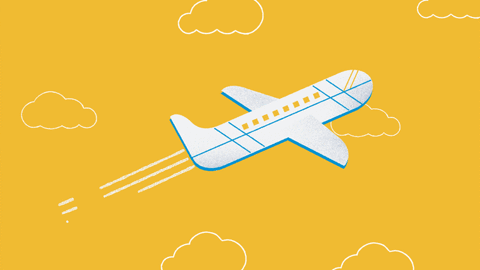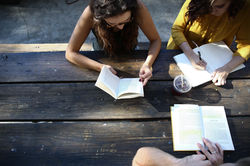 |  |  |
|---|---|---|
 |  |  |
 |
Reading to Learn: Summarizing While Soaring the Sky
Lolly Zimmerman
Rationale: Once students have learned to read fluently they can begin to work on reading for comprehension. When students learn to read for comprehension they are able to use information from texts to learn. This is an important skill for students to gain so that they can continue to pursue their education. Reading comprehension can be learned through a variety of methods, so this lesson will focus on one method rather than looking at all of the different ways these skills can be attained. We will be looking at summarizing. Summarization teaches students how to focus on the main points of a text and how to use a graphic organizer. This lesson will teach reading comprehension by showing readers that I understand research based procedures such as learning and using vocabulary words and summarization.
Materials:
Pencil, Paper, Highlighter, White board and dry erase marker, Sheet of blank paper, Reading binder, Sheet of lined paper, Copies of article “Oceans”, Copies of article “Taking Flight with the Wright Brothers”, The Birdmen and National Geographic Concise History of Science & Invention: “An Illustrated Timeline”, Grading rubric, Overhead camera
Procedures:
Say: Okay, class today we will be learning a new reading strategy. Because we are all fluent readers we are going to be working with a new skill that can help us gain reading comprehension. The strategy we are going to be working on is summarization. Summarizing helps us take one big article and look at the important facts, rather than the whole text. We are going to look at two articles so that we understand the main points of the articles. As we summarize we are going to be focusing on the main idea, looking at facts that support this idea, and what information we can take out.
2. Say: Before we begin we need to learn some rules for summarization. We are going to use our piece of white paper to write these rules down. As I write each rule down on the board I want you to copy each one of the rules on to your paper. Once you have written these rules down you can place them on the front of your reading binder, so that you can remember them while we look at the articles.
3. Say: Our first step in summarizing is deleting trivia, which is information that is not important to the main idea of the article. So as we read the articles you can cross out small facts that might not be important. Once we have deleted the unimportant information I want you to highlight the information that is important for our understanding of the main point. Lastly, we will make a thesis (or topic sentence) that states the main point of the topic.
Say: The main idea of the article will be supported by all the details in the article. Now that we have gone over these steps I want you to write them down on your piece of lined paper. (steps will be written on the board for reference) Now that we know our key strategies for helping us summarize we can begin to look at an article to practice summarizing. - I will pass out the article (“Taking Flight with the Wright Brothers) and give a book talk.
5. Say: Book talk --> Did you know that over 70 percent of the earth is covered by the ocean? Which means there is far more ocean in the earth than land, that’s pretty crazy isn’t it? (we will wait a few seconds for everyone to find their place in the article) Okay, now we are going to read the first two paragraphs of this article together and practice summarizing them. While we are doing this we will also be looking at some new vocabulary words. Make note of the words that you do not know because you will need to write your own vocabulary words in your independent summary of the text. While we go through the article make sure you are highlighting important information and crossing out the information that is unhelpful. After each paragraph, write a summary sentence that highlights the main idea of that paragraph. You can use these questions to guide your summaries: What’s it about? What’s the point? (After the students finish reading the second paragraph, we will stop and go over what a good summary for these paragraphs would be by showing it on the overhead camera)
6. Say: Basin is a good vocabulary word for us to take a closer look at. We are going to use basin as our example vocabulary word, so that you learn how to use context clues when defining unknown words in the future. I can tell from the paragraph that it must be a hole of some sort because it says that, “oceans fill enormous basins in the Earth’s surface”. A basin can also be described as a valley in the earth’s surface. A basin is a large hollow area that can be filled with water. What might be another example of a basin that you may see? Good job, a lake may also be considered a body of water that fills a basin. Have you ever gone swimming in a basin (like a lake or an ocean)?
7. Say: The first step in our summarization is to look for the main idea in this paragraph. This can usually be found by looking at the title of the article, or is supported by all of the facts presented in the article. (wait for students to share what they think the main point of the article is) Right! This article is sharing all about the ocean and its function in our world. The information in this article helps us to learn more about the ocean, but it is not necessarily the most important thing for us to understand. Now that we know that we can look at the most important part of the sentence. Your sentence should look like this (show on overhead camera) àThe main idea is that the ocean is a crucial part of our world and serves many purposes in it’s function. On lined paper I would like you to summarize the main idea of this article.
8. Say: We are going to continue to point out important facts in each section of this article. Now that we have practiced this together, I want you to continue to work individually on this task. I want you to pick out some important facts and highlight important facts, while crossing out unimportant details. Now I will come around and look at your work.
9. Say: You guys are doing awesome! I love the way that you are pointing out the main ideas and supporting details by highlighting them. Once you have found the most important facts you can start to summarize the article in a one paragraph response. Find an umbrella term for everything that happens in the paragraph. After you do this I would like you to write five new words you have learned from this article and their definitions based on the context of the article. If you are confused feel free to pop a hand and ask me about them.
Assessment: Students will be assessed at the end of the lesson based on their abilities to summarize the text for the correct information. Along with the following reading comprehension questions:
___ Student underlined important ideas.
___ Did not underline trivia.
___ Summary used 1 + complete sentences.
___ Identified topic accurately.
___ Included key details.
___ Omitted trivia.
___ Captured main idea of text.
Who invented the first airplane and what were some of the qualities of these men that lead to their invention?
2. Because the ocean is so vast, what do you think is the most important function for the ocean in our ecosystem?
3. We also got to learn about some interesting sea creatures, what kind of sea creature do you think represents your personality, and why?
Reference:
Soaring the Sky by Melanie Abbott (word doc)
Sum, Sum, Sum It Up by Caroline Brennan
https://sites.google.com/site/carolinesexcitinglessons/home/sum-sum-sum-it-up
Busy Bees Flying into Summarization by Ashleigh Bonovitch. http://bonovitcha.wixsite.com/designs/reading-to-learn
National Geographic Kids. Hurt, Avery. “Ocean Habitat” https://kids.nationalgeographic.com/explore/nature/habitats/ocean/#coral-reef-fish.jpg
National Geographic Kids. (text adapted from) Klesius, Michael. “Taking Flight with the Wright Brothers” https://kids.nationalgeographic.com/explore/history/wright-brothers/